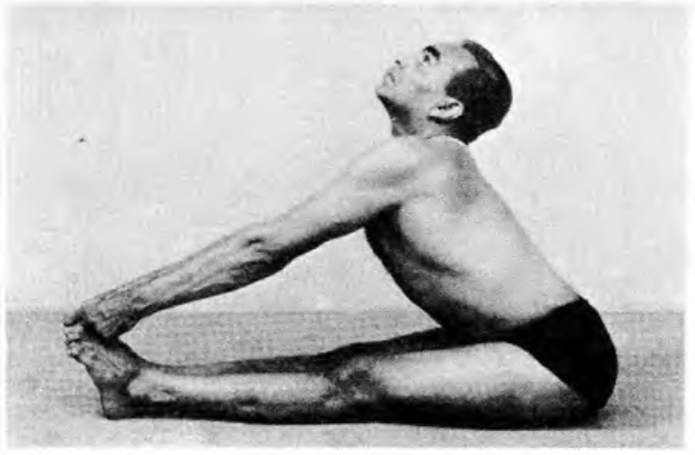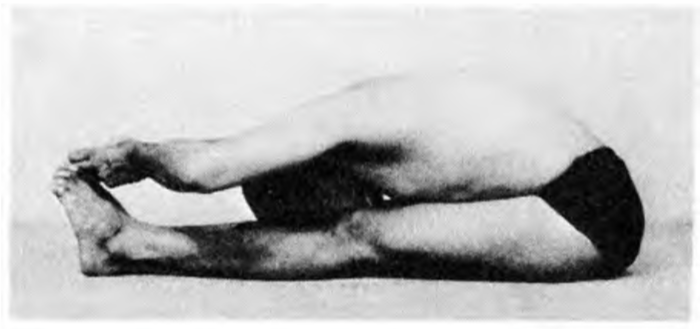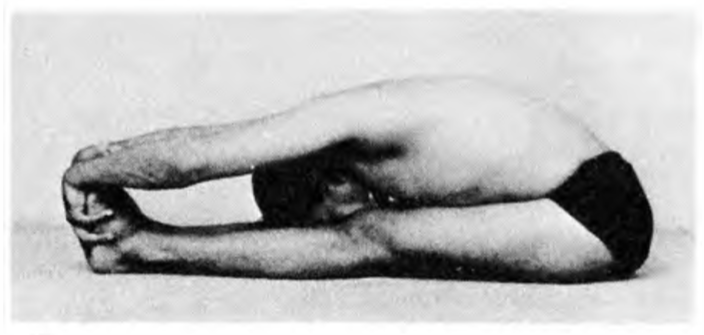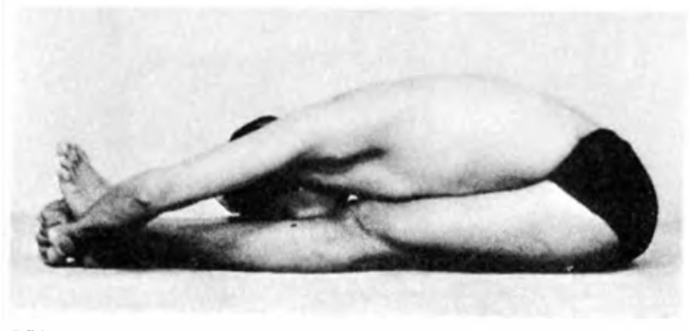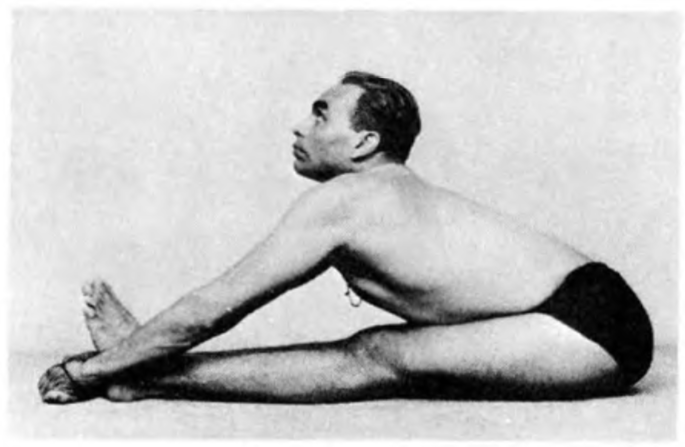Search your article
Paschimottcmasana
Paschimottcmasana – 6
(Also called Ugrasana or Brahmacharyasana)
Paschima literally means the west. I t implies the back of the whole body from the head to the heels. The anterior or eastern aspect is the front of the body from the face down to the toes. The crown of the head is the upper or northern aspect while the soles and heels of the feet form the lower or southern aspect of the body. I n this asana the back of the whole body is intensely stretched, hence the name. Ugra means formidable, powerful and noble. Brahmacharya means religious study, self-restraint and celibacy.
Technique
I. Sit on the floor with the legs stretched straight in front. Place the palms on the floor by the side of the hips. Take a few deep breaths.
2. Exhale, extend the hands and catch the toes. Hold the right big toe between the right thumb and the index and middle fingers and likewise the left big toe.
3· Extend the spine and try to keep the back concave. To start with the back will be like a hump. This is due to stretching the spine only from the area of the shoulders. Learn to bend right from the pelvic region of the back and also to extend the arms from the shoulders. Then the hump will disappear and the back will become flat. Take a few deep breaths.
4· Now exhale, bend and widen the elbows, using them as levers, pull the trunk forward and touch the forehead to the knees. Gradually rest the elbows on the floor, stretch the neck and trunk, touch the knees with the nose and then with the lips.
5· When this becomes easy, make a further effort to grip the soles and rest the chin on the knees.
6. When this also becomes easy, clasp the hands by interlocking the fingers and rest the chin on the shins beyond the knees.
7· When position 6 becomes easy, grip the right palm with the left hand or the left palm with the right hand beyond the outstretched feet and keep the back concave. (Plate I 5 8 . ) Take a few deep breaths. Exhale and rest the chin on the shins beyond the knees.
9· If position 8 also becomes easy, hold the right wrist with the left hand or the left wrist with the right hand and rest the chin on the shins beyond the knees.
10. See that the back of the legs at the knee joints rests firmly on the ground. In the initial stages the knees will be lifted off the floor. Tighten the muscles at the back of the thighs and pull the trunk forward. Then the back of the knee joints will rest on the floor.
11 . Try and stay in whichever of the above positions you can achieve from I to 5 minutes, breathing evenly.
12. Advanced pupils may extend the hand straight, rest the palms on the floor, join the thumbs beyond the outstretched feet and rest the chin on the shins beyond the knees. Stay for a minute or two with even breathing.
I 3· Inhale, raise the head from the knees and relax.
I4. One does not feel any weight on the back in correct Paschimottanasana.
Effects
This asana tones the abdominal organs and keeps them free from sluggishness. It also tones the kidneys, rejuvenates the whole spine and improves the digestion.
The spines of animals are horizontal and their hearts are below the spine. This keeps them healthy and gives them great power of endurance. In humans the spine is vertical and the heart is not lower than the spine, so that they soon feel the effects of exertion and are also susceptible to the heart diseases. In Paschimottanasana the spine is kept straight and horizontal and the heart is at a lower level than the spine. A good stay in this pose massages the heart, the spinal column and the abdominal organs, which feel refreshed and the mind is rested. Due to the extra stretch given to the pelvic region more oxygenated blood is brought there and the gonad glands absorb the required nutrition from the blood. This increases vitality, helps to cure impotency and leads to sex control. Hence, this asana was called Brahmacharyasana. Brahmacharya means celibacy and a Brahmachari is one who has controlled the sex appetite.
